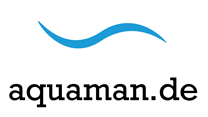What is the difference between DiCAPac and other waterproof bags?
The biggest difference is that DiCAPacs are mainly designed for digital cameras. The use of a UV coated lens ensures best photo quality. Usually waterproof housing for cameras cost hundreds of Euros and only professionals can afford them. DiCAPacs are affordable for ordinary people.
Is it possible to use the flash light?
Yes!
Absolutely. With most other products the flash reflects against the
lens, resulting in errors. To prevent it these bags have lenses in the
form of a tube. This allows the use of flash light. The use of the Flash
may be restricted on certain models only.
Down to which depth are they waterproof?
The test results show that they are waterproof down to 18 m depth. But the operation of camera controls is very difficult due to the water pressure at such depths. The characteristic of a waterproof bag is another than the one of waterproof hard cases. The latter are better suited to great depths. Our product is inexpensive and easy to handle. We are sure that with the necessary prudence, good results will succeed.
What other benefits are there?
The lens’ outer surface is coated so that the water drips off from it. The DiCAPacs lens is removable and can be easily cleaned when condensation forms on the inside of the bag. Nevertheless you should give a desiccant sachet into the bag, to prevent condensation from the outset. And should a lens be scratched, from whatsoever: we also have spare lenses.
The roll-up and Velcro seal makes the operation easy and yet the bags are hermetically sealed.
Under what conditions can the DiCAPac be used?
The DiCAPac is absolutely waterproof and enables good photo results anywhere. Only hot water, as for example in hot springs and saunas should be avoided for safety reasons.
The bags for smartphones, mini tablets and tablets?
These DiCAPac bags with their double-safe 'cylinder seal lock" are waterproof down to ten meters. They are just as easy to use as all other DiCAPac bags. Touch screens can be operated without a problem through the clear film on the front. Speaking and listening work without sacrificing quality. Also reception or Bluetooth are unaffected.
On the back photo-real foils are welded in: so you can take your photos through the film - without loss of quality. Be save in the English rain or underwater. Underwater a touch screen usually does not work. Photo release on the Smartphone only works via buttons. There are apps that let you get the photo tripping function on the loud/quiet button of the phone. For videos, you can activate the function above the water line.
Does the DiCAPac float with content?
Yes. The cylinder seal closure seals the bag airtight. The principle: Most electronic devices contain a lot of air. Additionally there is air inside the bag around the device. In case of doubt please test the buoyancy in your sink or bathtub.
What does 'UV stabilized' mean?
Most plastics become brittle due to prolonged sunlight. This particularly applies to transparent foils, which quickly turn yellow by UV radiation. All DiCAPac materials are UV stabilized, so that this does not happen. Oh, Yes, the bags are also saltwater resistant.
Caution: Although the films themselves are protected, they do not protect the content from harmful UV rays. Electronic equipment should never be exposed to bright sunlight over a longer period of time - also not in a DiCAPac!
What instructions should I follow?
After receiving the shipment, check the contents for completeness and quality. Before first use, test the Dicapac™ in a sink or bathtub. Insert a small box or similar in the bag, dip the Dicapac™ under water and press it slightly. Some air bubbles will rise from the closure. That's ok, because some water enters the cylinder seal closure, but not the bag. But if a chain of bubbles comes out the bag could be leaking. Then please check again whether you locked the bag properly. If it is still leaking, we ask you to contact us.
Email: info@aquapac.de
Check the Dicapac™ for external damage prior to each use. In case of doubt please perform the sink test again.
Before opening, please shake off all water from the cylinder seal closure, as it can come into the bag when opening it.
Avoid scratches on the film - especially on the photo-windows of Smartphone and Tablet cases. Avoid contact with sharp edges especially when stored in compartments and when worn under life jackets.
After use in salt or chlorine water, as well as contact with sun cream, you should clean the Dicapac™ with soapy water and then rinse with clear water. Do not use bleach, cleaning alcohols or household cleaners. The photo windows can also be cleaned with cleaning cloths from a photo specialist.
A user manual comes with each Dicapac.
What guarantee do we give?
The two-year statutory warranty applies to the Dicapacs.
Is the sound quality affected?
You can use your mobile phone, Smartphone or Tablet as usual in the Dicapac. The film acts as a diaphragm. To meet a minor loss of volume, best raise the speaker volume.
Why do I need desiccant?
Particularly in warm and humid climates air humidity is included when closing the Dicapac. When now the trapped air cools down, for example in the water or in air-conditioned rooms, the cooled air will no longer be able to hold the moisture and emits it. It condenses and the foil (and the camera) fogs from inside.
Desiccants absorb the moisture in time, if they are put inside the bag at an early stage. And so they prevent fogging. A desiccant sachet comes with the camera bags. You can buy more from us.
